Flowers have the unique ability to transform any outdoor or indoor space into a vibrant, welcoming haven filled with beauty and charm. Planting flowers not only enhances the aesthetics of your home and garden but also supports pollinators, boosts biodiversity, and provides a peaceful escape from the busyness of daily life. However, creating a colorful garden requires more than just planting random blooms—it takes planning, proper soil preparation, and consistent care.
This step-by-step guide will walk you through how to plant flowers and design a colorful, flourishing garden that will thrive season after season.
Step 1: Choose the Right Location
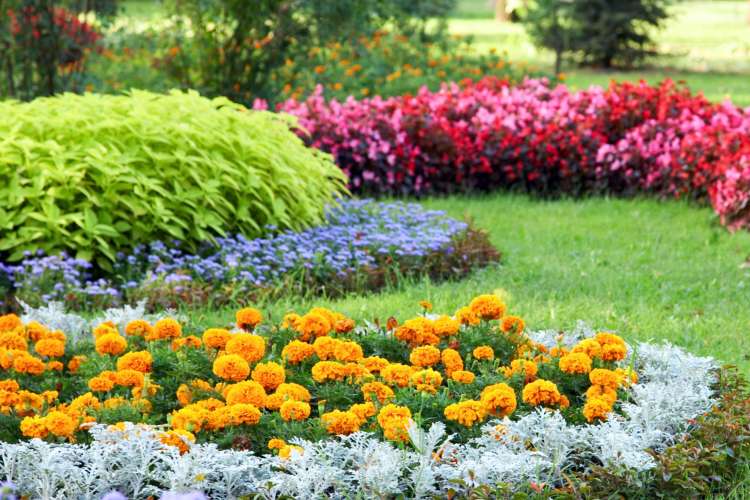
The first step in planting flowers is selecting the ideal spot for your garden. Flowers need different amounts of sunlight to grow, so knowing your space’s conditions will help you choose suitable plants.
- Full sun (6–8 hours of sunlight daily): Great for sun-loving flowers like marigolds, petunias, zinnias, and sunflowers.
- Partial shade (3–6 hours of sunlight): Perfect for impatiens, begonias, and fuchsias.
- Full shade (less than 3 hours of sunlight): Works best for hostas, astilbes, and bleeding hearts.
Take time to observe your garden area throughout the day to identify how much sunlight different spots receive. This will ensure your plants get the conditions they need to flourish.
Step 2: Prepare the Soil
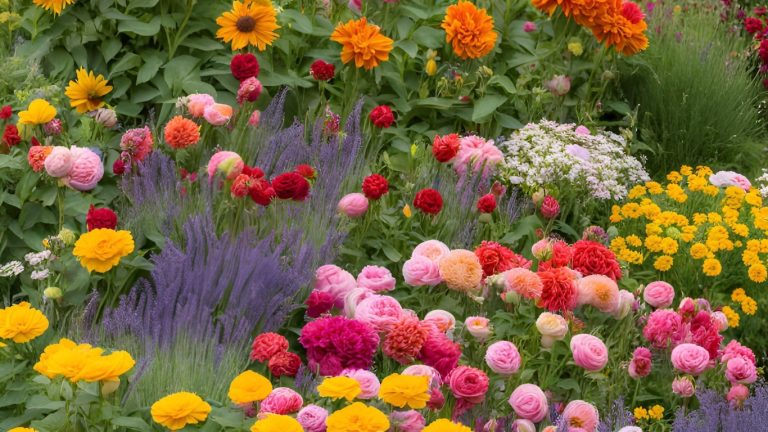
Healthy soil is the foundation of a colorful flower garden. Whether you’re planting directly in the ground or in containers, the soil should be loose, nutrient-rich, and well-draining.
- Test the soil pH: Most flowers thrive in slightly acidic to neutral soil (pH 6.0–7.0). You can buy a simple soil testing kit at garden centers.
- Add organic matter: Mix compost, peat moss, or aged manure into the soil to improve fertility, drainage, and aeration.
- Loosen compacted soil: Flowers have delicate roots that need space to grow, so loosen the soil to about 8–12 inches deep before planting.
If you’re container gardening, use high-quality potting soil instead of garden soil for better drainage and aeration.
Step 3: Select the Right Flowers
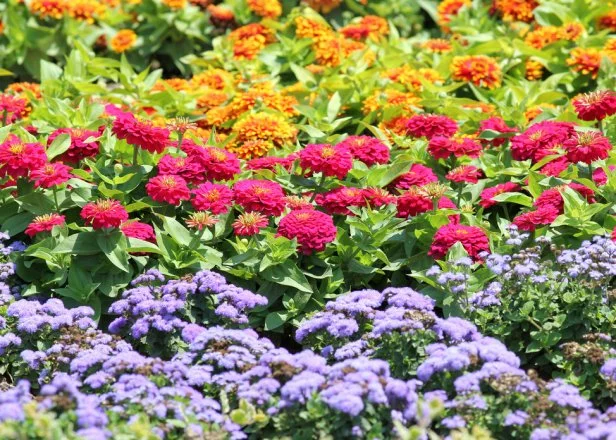
To create a colorful garden, you’ll want to choose a mix of annuals and perennials:
- Annuals: These flowers bloom for one season but provide continuous, vibrant color (e.g., marigolds, impatiens, cosmos).
- Perennials: These flowers return year after year, often blooming for shorter periods (e.g., coneflowers, daylilies, black-eyed Susans).
When selecting flowers, consider:
- Blooming season: Plant flowers that bloom at different times to ensure color throughout spring, summer, and fall.
- Color palette: Choose complementary or contrasting colors to create harmony. For example, purple and yellow are striking together, while pink and white look soft and calming.
- Plant height: Taller flowers should go at the back of borders, with medium and shorter flowers layered in front for a tiered effect.
Step 4: Planting Flowers Step by Step
Once you’ve chosen your flowers and prepared your soil, it’s time to plant.
For Ground Planting:
- Dig holes: Dig a hole twice as wide as the root ball but only as deep.
- Loosen roots: Gently loosen the roots if they are compacted.
- Place in soil: Set the plant in the hole so the crown (where stem meets roots) is level with the soil surface.
- Backfill soil: Fill in the hole and gently firm the soil around the plant.
- Water thoroughly: Water immediately after planting to help settle the roots.
For Containers:
- Choose containers with good drainage holes.
- Fill with potting mix, leaving a few inches at the top.
- Plant flowers, ensuring the crown is at soil level.
- Water thoroughly and place the container in the appropriate light conditions.
Step 5: Watering and Fertilizing
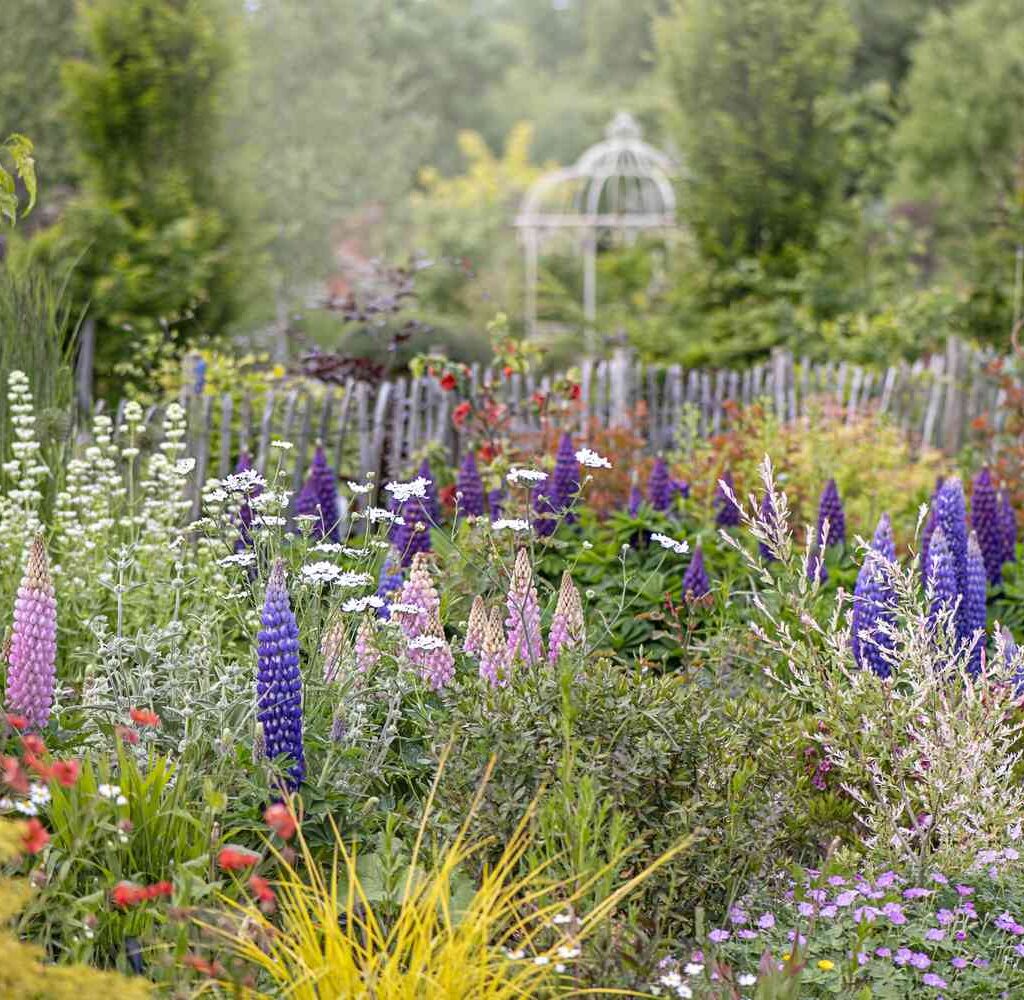
Proper watering is key to keeping your garden vibrant.
- Watering:
- Newly planted flowers need consistent moisture until established.
- Water deeply 1–2 times per week rather than lightly every day.
- Water at the base of the plant to prevent fungal diseases on leaves.
- Fertilizing:
- Use a balanced fertilizer (e.g., 10-10-10) for most flowers.
- Annuals benefit from feeding every 4–6 weeks during the growing season.
- Perennials may only need fertilizer in spring when new growth begins.
Step 6: Mulching and Weed Control
Mulching is essential for maintaining a healthy flower garden.
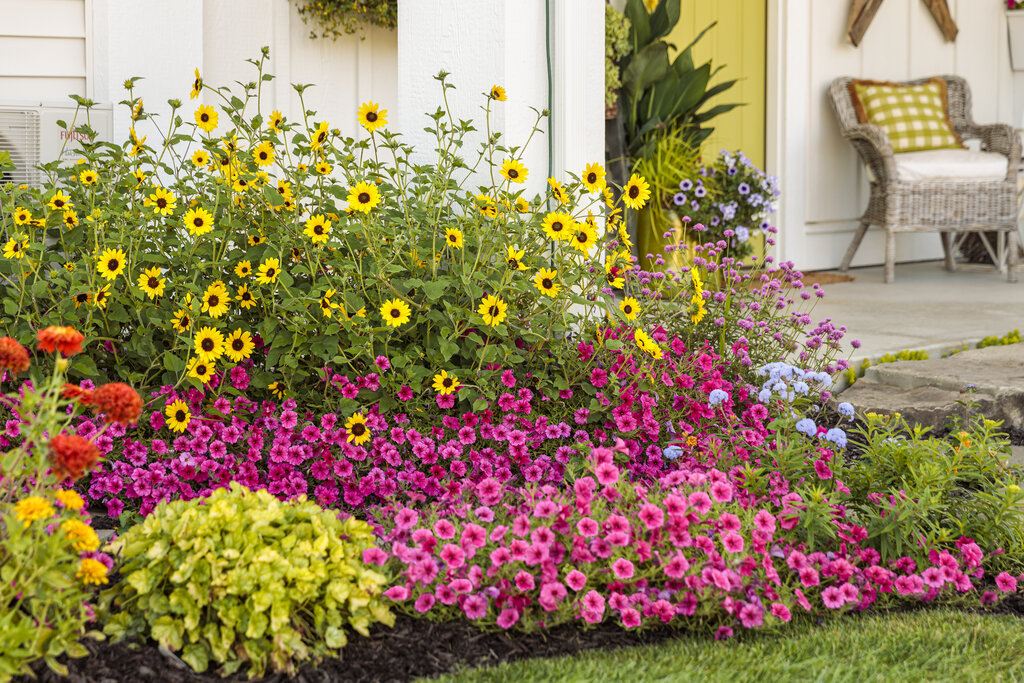
- Benefits of mulch:
- Retains soil moisture.
- Regulates soil temperature.
- Reduces weed growth.
- Enhances garden appearance.
Spread a 2–3 inch layer of organic mulch (like shredded bark or straw) around flowers, but avoid piling it against plant stems.
Step 7: Garden Design for Maximum Color
To create a truly colorful and inviting garden, consider these design principles:
- Color Schemes:
- Warm tones (red, orange, yellow) create energy and excitement.
- Cool tones (blue, purple, white) offer calmness and relaxation.
- Mixing warm and cool colors creates balance.
- Layering Plants: Place tall flowers like sunflowers or hollyhocks at the back, medium plants like zinnias or daisies in the middle, and groundcovers or short blooms like alyssum at the front.
- Continuous Blooming: Plant flowers with staggered blooming periods so your garden never looks bare. For instance, tulips in spring, zinnias in summer, and chrysanthemums in fall.
- Add Pollinator-Friendly Flowers: Bees, butterflies, and hummingbirds will not only bring life to your garden but also help it thrive.
Step 8: Ongoing Maintenance
A colorful garden requires care throughout the growing season.
- Deadheading: Remove spent flowers regularly to encourage new blooms.
- Pruning: Trim back leggy or overgrown plants to maintain shape.
- Pest Control: Watch for aphids, slugs, and other pests. Use organic solutions like neem oil or insecticidal soap.
- Dividing Perennials: Every few years, divide perennials like daylilies and irises to keep them vigorous and prevent overcrowding.
Step 9: Seasonal Care
Different seasons require different maintenance:
- Spring: Prepare soil, plant early bloomers, and fertilize perennials.
- Summer: Focus on watering, mulching, and deadheading.
- Fall: Plant bulbs like tulips and daffodils, clean up debris, and prepare perennials for dormancy.
- Winter: Protect sensitive plants with mulch or covers and plan your next garden design.
Conclusion
Planting flowers and creating a colorful garden is a rewarding experience that brings beauty, joy, and ecological benefits to your home. By carefully choosing the right location, preparing your soil, selecting flowers with different bloom times, and maintaining them with proper watering, fertilizing, and pruning, you can design a vibrant garden that flourishes all season long.
A colorful flower garden not only pleases the eye but also nurtures the soul, creating a space where you can relax, unwind, and connect with nature. With patience and care, your garden will become a dazzling canvas of colors that continues to bloom year after year.






Leave A Comment